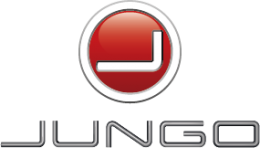
30 September 2015
World Robotics 2015
Industrial robot sales up in all regions in 2014, particularly in Asia (China in the lead).
Impressive growth rates again for service robot sales in 2014.
Industrial Robots
Five major markets represent 70 percent of the total sales volume: China, Japan, USA, South Korea and Germany. "The main driver of this development is the global competition of industrial production. The automation witnessed by the automotive sector and the electrical/electronics industry comes out top here with a market share of 64 percent", says Arturo Baroncelli, President of the International Federation of Robotics (IFR).
The rapid automation in China represents a unique development in the history of robotics. The number of industrial robots sold increased by 56 percent alone last year in comparison to 2013. China is the largest and fastest growing robotics market in the world. The potential remains enormous despite the recent economic downturn. After all, Chinese production industries currently have a robotic density of just 36 units per 10,000 employees. To compare: As the front-runner South Korea deploys 478 industrial robots per 10,000 employees followed by Japan (315 units) and Germany (292 units).
The statistics on robotic density also indicate huge opportunities for growth in the USA. Production industries there deploy just 164 industrial robots per 10,000 employees right now. The USA is currently automating its economy at high speed. The aim is to strengthen the country as an industrial centre and to retrieve outsourced production. In 2014 the number of installed robots increased by 11 percent to around 26,000 units.
In Europe it is Germany that takes the lead. Within one year (2014) the sales figures increased by around 10 percent to about 20,100 units – to date the largest number of sales registered within twelve months. Despite the already very high robotic density existing there, the world's fifth largest robotics market remains on a path of expansion – driven primarily by the automotive industry.
In 2014 the electrical/electronics sector posted a new record – sales increased by 34 percent compared to the previous year. The strong demand for industrial robots in the production of consumer electronics, communication equipment as well as computer and medical technology adds up to a total global market share of 21 percent.
The wave of digital transformation and automation will continue to drive the triumphant march of industrial robots onwards up to 2018. "Industry 4.0" projects mean that human-robot teams, for example, are on the cusp of a break-through. Simplification of the use of robots will additionally open up the market for new applications. This is equally true of small and medium-sized companies as it is for large corporations in all sectors. Besides the automotive and electronics industries, this development is also being increasingly felt in the metal processing, plastics, food and packaging industries.
"The market volume available to industrial robots is enormous. Including supporting services we estimate the global market value to be 32 billion US dollars for 2014", sums up IFR President Baroncelli.
Service robot sales
"Service robots have had an impressive growth rate in 2014" states Martin Hägele, Chairman of the IFR Service Robot Group and author of the study. "Sales of personal and domestic robots climbed for the second consecutive year by 28 percent to three million units in 2014. Entertainment robots had a sales growth of 40 percent in 2014 over the previous year, and sales of professional service robots had a solid growth of 11.5 percent", he continues.
Alongside the already established domestic robot assistants used at homes and in gardens, the market for robots assisting the elderly and the disabled grew tremendously. 4,416 units of such robots were sold in 2014 compared to 699 units in 2013, representing an increase of 542 percent. There is a substantial growth potential for this market in the future as more and more countries expand their research and development in this area.
Sales of service robots for professional use in 2014 were around 24,200 units (2013: 21,700 units). Defence and security applications make up 45 percent of sales. Thereof, the unmanned aerial systems make a total of 82 percent of the volume. Agricultural robots made up a quarter of all professional service robot sales in 2014 with 5,700 units sold and a market value of almost one billion US dollars (a sales increase of twelve percent). Sales of milking robots rose to 5,180 units in 2014, 8 per cent more than last year.
Growth in the logistic systems continues in 2014 with 2,700 units installed, representing an increase of 27 percent over 2013.
Industrious Brussels EU District, Avenue des Arts 6-9, 1210 Brussels, Belgium, +32 490 57 57 65
Transparency Register number: 0289344948-82














































































































